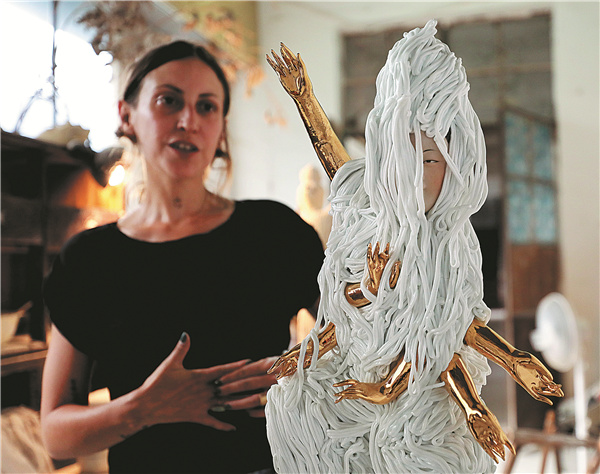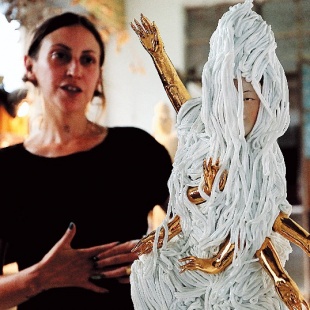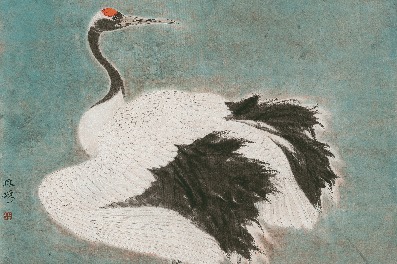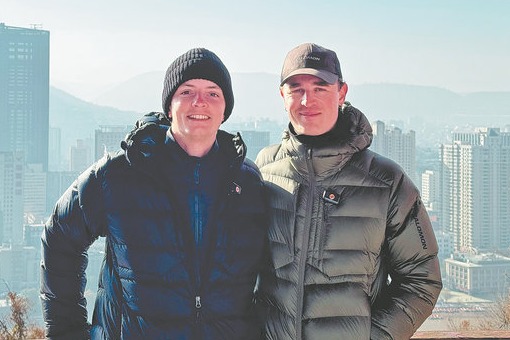Ware to share


Japanese artist Ayao Takayanagi attracted a lot of attention at an exhibition in Jingdezhen, East China's Jiangxi province, in mid-December.
Takayanagi, who specializes in ceramic art and tea rituals, says she has been fascinated by jianzhan, known as tenmoku in Japan, since seeing an artwork in a Japanese museum in 2000.
Jianzhan is a Chinese porcelain craftsmanship, with a history of about 900 years. It uses iron black glaze and white ash glaze in making porcelain pieces, allowing the black pattern to appear on the surface after it is fired in kilns. Often used as tea sets for royal families, the craft's development peaked in the Song Dynasty (960-1279).
Impressed by the subtle effects of the glaze and the interplay of light and shadow on porcelain ware, Takayanagi moved with her husband, Wen Minxiong, originally from South China's Guangdong province, to Jingdezhen in 2013.
"The name of the place precedes itself, so I believe it is the best place for me to pursue ceramic art here," Takayanagi says.
What she has to offer is part of highlights at the 2021 China-Japan-ROK ceramic culture, art and tourism week that kicked off in the "ceramic capital city" Jingdezhen on Dec 14.
More than 20 artists from the three countries brought some 100 artworks, including paintings, calligraphy, tea sets, ceramics and sculptures. Visitors enjoyed the cultural charm of the three countries for a week.
The event is part of Jingdezhen's effort to become a "culture city of East Asia" by 2023. Jingdezhen will host more than 100 ceramic-related events to boost communication among artists from the three countries.
The city hopes to develop itself as a center for ceramic innovation, protection, cultural exchange, tourism and trade, according to Lin Rong, head of Jingdezhen's publicity department.
"It's such an open and free place, especially for art creations," Takayanagi says. "Everyone has an open mind, and won't judge or even laugh at your work. When I wear a kimono and go out, no one stares at me."
International events like the China-Japan-ROK ceramic culture, art and tourism week have not only allowed Takayanagi to interact with artists from home and abroad, but have brought guests to her doorstep.
"I arranged art and tea events at my place, and many people came, especially before the pandemic," she says.
With a history of ceramic-making dating to over 2,000 years ago, Jingdezhen has developed an integral industry chain for ceramics. The city boasts more than 8,300 enterprises and more than 9,800 independent practitioners in ceramics. About one-tenth of its population is engaged in related businesses, according to local authorities.





































